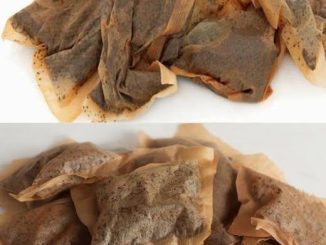Laundry never ends. Just when you’ve folded the last T-shirt, the hamper mysteriously fills again. We all develop our washing routines, yet many of us wonder: are we washing too frequently or not enough? This laundry guide cuts through the confusion. Most of us play it by ear, with conflicting advice from family members and online experts making it hard to find the right balance. Your mom insists sheets need washing twice weekly while experts say once is plenty. Let’s settle this debate once and for all.
The Basics of Washing Frequency

As with any comprehensive laundry guide, what works for one person may not work for another. Someone who works in a sterile office environment will have different needs than someone working outdoors or in a restaurant kitchen. Your comfort level with re-wearing clothes also plays a significant role in determining your ideal washing schedule. “Washing frequency is not an exact science for any garment and often relies on a sniff test to determine if it needs cleaning,” according to laundry specialists. How often should you wash your stuff? Several factors affect your ideal laundry schedule:
- Direct skin contact (more contact = more frequent washing)
- Your sweat level (heavy sweaters need more frequent washing)
- Fabric type (delicates vs. sturdy materials)
- Weather conditions (summer clothes need more washing than winter layers)
- Your activity level (office work vs. construction site)
The “Wash After Every Wear” Club

Cleaning experts advise washing these items after every wear: “tights, leggings, yoga pants, exercise clothing, T-shirts, socks undershirts/underpants and swimming suits.” Any reliable laundry guide will emphasize that swimsuits need washing after every use to remove chlorine, salt, sunscreen, and sweat. Just don’t toss them in the dryer. The heat ruins the elastic. Workout clothes should be washed immediately as that funk isn’t just unpleasant, it’s bacteria multiplying.
The “Give It Another Day” Group

Leggings and yoga pants deserve special consideration. For Netflix marathons? Maybe 2-3 wears. However, “if you’ve exercised or sweated vigorously in them, it’s best to wash them after every wear.” Some clothes can hang around for a second or third wear: tops and dresses typically go 1-3 wears, shorts and khakis can last 2-3 wears, and shapewear generally needs washing after 1-3 wears
The “Few More Wears” Items

Bras can go 3-4 wears between washes. As brassiere expert explains, “When you’re strapped in for 10 to 12 hours a day, the garment not only collects oils from your skin and deodorant, but the elastic stretches and loses its form through wear.” Pajamas typically last 3-4 wears, especially if you shower before bed. Slacks, skirts, and dresses follow a similar schedule, with experts recommending washing “every three to four times you wear or use them.”
The Jeans Debate

For jeans, most recommend washing after 4-5 wears. Style experts caution, “The less you wash them the better, especially denim with any elastane (stretch). When you wash your denim, you’re putting it through a beating, and each cycle breaks down the fabric.” Sweaters vary by material. Cotton, silk, and cashmere need washing after about 2 wears, while wool and synthetic blends can stretch to 5 years.
Outerwear and Seasonal Items

Jackets and blazers: After 5-6 wears Fleece jackets and sweatshirts: After 6-7 wears Wool coats: 1-2 times per season Down parkas and vests: 2 times per season Leather and suede jackets: Once per season (professional cleaning) Winter accessories (hats, gloves, scarves): 3-5 times per season.
A thorough laundry guide must emphasize that outerwear cleaning isn’t just about appearance. These items collect everything from skin cells to pollutants and food particles over time. Even if a coat looks clean, the invisible buildup can affect both the fabric’s integrity and your respiratory health, especially for those with allergies or sensitivities.
Household Linens

A household maintenance study points out, “It’s important to note that phosphates in our detergents have decreased over the years, so your clothes may not be getting as clean as you think, and washing regularly is even more important.” For home textiles, sheets and pillowcases need weekly washing, while bath towels can go 3-4 uses. Hand towels and dish towels should be washed every 2 days, bath mats weekly, and throw blankets approximately every 3 months.
Smart Washing Practices: Laundry Guide Essentials

- Sort properly: Beyond colors and whites, “separate dirty or muddy items from lightly soiled clothing, and abrasive fabrics (denim) from delicate ones.”
- Don’t overstuff machines: Give your clothes room to move for better cleaning results.
- Choose the right temperature: “Delicate fabrics like wool, silk, or lace work best in cold water. Hot water, however, is the best option when you’re trying to remove stains, stench, or germs.”
- Select appropriate detergent: Different loads may require different cleaning solutions.
- Clean your washing machine: “While warm water, laundry detergent, and bleach get rid of most bacteria, complete the job with a laundry sanitizer.”
Finding Balance

There’s a delicate balance in laundry frequency, as any good laundry guide will tell you. Wash too little, and you’re wearing a petri dish. Wash too much, and you’re destroying your clothes fiber by fiber. Textile research indicates, “It’s best to wash denim and some other heavier garments less frequently to preserve the fibers and structure of the pieces.” Yet under-washing leads to a buildup of body oils and skin cells in fabrics, potentially causing skin irritation or unpleasant odors.
The Bottom Line

Pay attention to your specific items. That white cotton tee might need washing after every wear, while your wool cardigan can hang on for several outings. When in doubt, use your senses. Visible dirt? Wash it. Noticeable smell? Wash it. Does it feel sticky or stiff in spots? You know what to do. These guidelines from our laundry guide aren’t written in stone. Consider them starting points you can adjust based on your lifestyle, climate, and personal preferences. With proper laundry practices, you’ll extend the life of your clothing while keeping everything fresh and clean. It’s a delicate art, this laundry business, but now you’re equipped to master it.


